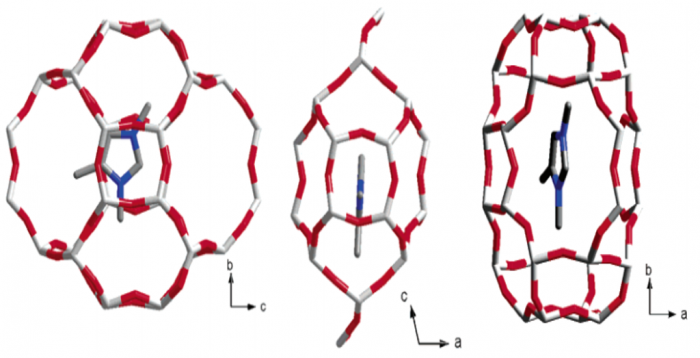"Synthesis and crystal structure of As-synthesized and calcined pure silica zeolite ITQ-12"
- Authors
X.B. Yang, M.A. Camblor, Y. Lee, H.M. Liu, D.H. Olson
- Journal
Journal of the American Chemical Society
Vol.126, No.33, pp.10403-10409, 2004.08 - DOI
Abstract
The small-pore pure silica zeolite ITQ-12 has been synthesized with fumed silica as the silica source in the presence of 1,3,4-trimethylimidazolium hydroxide and hydrofluoric acid under hydrothermal conditions at 448 K. Rietveld refinement using synchrotron X-ray diffraction data of the calcined ITQ-12 product taken at 298 K confirms the proposed topology, framework type code ITW, which can be described by a monoclinic unit cell [Si24O48] having Cm symmetry. Unit cell parameters are a = 10.3360(4), b = 15.0177(6), and c = 8.8639(4) Å, β = 105.356(3)°, and cell volume V = 1326.76(9) Å3. For as-synthesized ITQ-12, the occluded fluoride anion is located inside the double four-membered ring, while the flat 1,3,4-trimethylimidazolium cation lies on the equatorial plane of the slit-shaped [44546484] cage, with its longest dimension in the [010] direction. The monoclinic unit cell |(C6N2H11)+2F-2|[Si24O48], having Cm symmetry, has parameters a = 10.4478(3), b = 14.9854(4), and c = 8.8366(3) Å, β = 105.935(2)°, and cell volume V = 1330.34(7) Å3 at 298 K. Cooperative structure-directing effects during the crystallization of ITQ-12 are discussed in terms of the structure of the as-made material.












